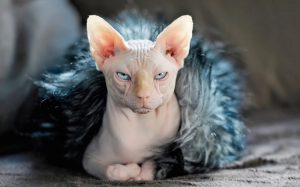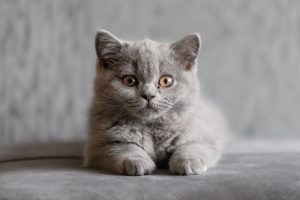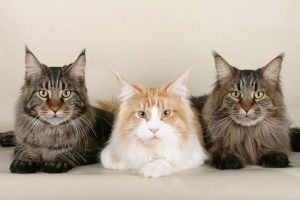The Persian cat is one of the most sought-after breeds in the world, famous for its luxurious appearance, thick, silky coat, and distinctive face. With their gentle, calm, and lovable nature, Persian cats are well-suited for anyone who enjoys a quiet companion. The article below KnowAllAnimals will help you better understand their characteristics, care, and prices around the world.
Persian Cat Breed at a Glance
- Origin: Iran (ancient Persia)
- Weight: 3 – 5.5 kg (6.6–12 lbs)
- Height: 25 – 38 cm (10–15 inches)
- Lifespan: 12 – 15 years
- Key Features: Round face, short nose, long and soft coat
- Temperament: Calm, friendly, quiet
- Other Names: Persian Cat
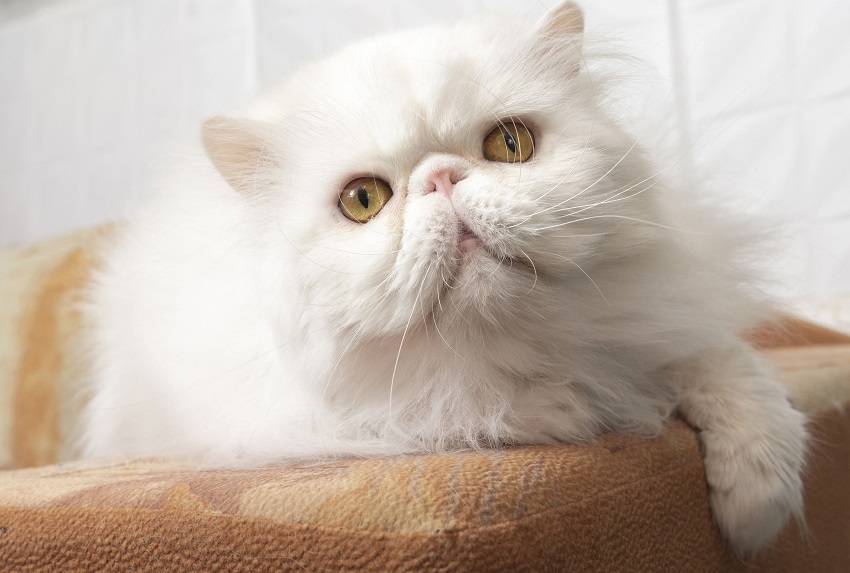
1. The Origin of the Persian Cat
The true origin of the Persian cat remains a mystery. Many theories suggest that the breed originated in Persia (modern-day Iran) and was brought to Europe by nobles, merchants, and sailors after their expeditions in previous centuries.
However, some modern genetic studies indicate that Persian cats have many similarities with native cat breeds in Western Europe. This has raised questions about their true origin and whether crossbreeding or migration occurred between cat breeds throughout history.
Despite the many unanswered questions surrounding the origin of the Persian cat, one thing is undeniable: their immediate appeal. Persian cats were champions at the world’s first cat show, held at the Crystal Palace in London in 1871. The breed quickly impressed the Western aristocracy and remains beloved worldwide to this day.
Today, the Persian cat breed has been selectively bred and developed into various lines, such as the traditional Persian, the Peke-faced Persian, and the Himalayan cat. The Exotic Shorthair is also a result of crossbreeding a Persian cat with a British Shorthair. Each line has its own unique beauty while retaining the characteristic elegance of the breed. It is this diversity and uniqueness that has allowed the Persian cat to maintain its appeal for centuries.
2. Key Characteristics of the Persian Cat
2.1. Size and Appearance
- Size: Persian cats are a medium-to-large breed, with a body length of 35 to 45 cm (14-18 inches) and a weight ranging from 3.2 to 5.4 kg (7-12 lbs). They have a sturdy body and short, strong legs, giving them a round and cute appearance.
- Head and Face: The main highlight of a Persian’s face is their large, expressive, round eyes and a short nose, which creates an endearing “scrunched” look. Their high cheekbones and small, widely spaced ears further emphasize the breed’s characteristic round face.
- Tail: The Persian cat’s tail is moderately long, thick, and bushy, often likened to a fanned feather, adding to their elegant look.
2.2. Coat and Color
- Coat: Persian cats are known for their long, thick, and soft coat. The coat consists of two layers—a sleek outer layer and a short but dense inner layer that helps keep them warm and gives them a luxurious feel. However, this long coat requires frequent brushing and grooming to prevent matting.
- Colors: Persian cats come in a wide variety of colors and patterns, from simple colors like white, black, blue-gray, and cream, to complex patterns like calico, tabby, and smoke. Some Persian cat variations also have “odd-eyes”—two different colored eyes, typically one blue and one copper, which creates a unique and attractive look.
2.3. Classification of Persian Cats
Persian cats are divided into main lines based on their facial features and breeding origins:
- Peke-Faced Persian: This type of cat has a flat face and a very short nose, creating a distinctive “scrunched” expression. However, this nose type often leads to respiratory problems and watery eyes.
- Traditional Persian (Doll-Face Persian): This type has a less flat face and a slightly longer nose than the Peke-Faced Persian, retaining a more traditional look that makes breathing easier.
- Himalayan: This breed is a cross between a Persian and a Siamese cat. Its main feature is the “point” coloring (dark points on the ears, nose, paws, and tail) similar to the Siamese. It is a combination of the Persian’s elegant beauty and the Siamese’s striking appearance.
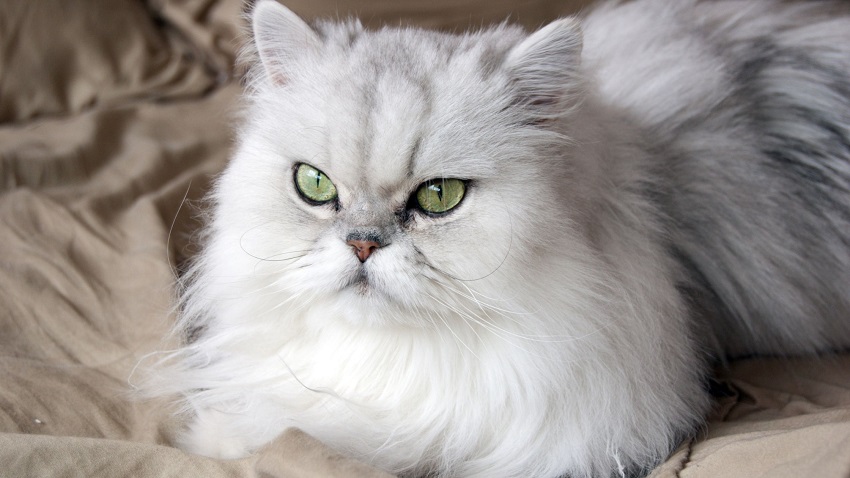
3. Persian Cat Temperament and Behavior
Persian cats are known for their calm and friendly temperament, which makes them ideal for families looking for a peaceful and easy-to-care-for cat. Here are the key characteristics of a Persian cat’s personality and behavior:
- Calm and Inactive: They love to relax, rarely climb, and don’t enjoy vigorous activity. They are well-suited for a quiet living environment, especially in small apartments.
- Friendly and Affectionate: Persian cats are devoted to their owners and enjoy being petted, but they are not overly clingy. They are an ideal companion for those who want a gentle, low-maintenance cat.
- Shy with Strangers: Persian cats can be cautious around new people but will become friendly once they feel safe. They thrive in quiet and orderly environments.
- Good with Families and Other Pets: With their gentle nature, Persian cats get along well with children and other pets if they are introduced from a young age.
- Indoor Lifestyle: Persian cats prefer to live indoors and don’t have a strong desire to go outside. This makes them safe from outdoor risks and a good fit for busy families or those living in urban areas.
Persian cats are the perfect breed for families that enjoy a quiet home and a tidy living space, bringing a sense of warmth and tranquility.
4. Classification and Comparison of Persian Cat Types
Based on their facial structure, Persian cats can be divided into two main types:
- Traditional Persian (Doll-face Persian): This type has a longer, flatter face with a straight nose, which reflects the original appearance of the breed’s ancestors. Traditional Persians have a gentle and friendly temperament but are also active and enjoy exploring and playing.
- Peke-Face Persian: This type has a short, flat face with a slightly upturned nose, a characteristic that is primarily the result of selective breeding. While popular in cat shows for their unique appearance, their short facial structure can cause some breathing issues. Modern Peke-Face Persians often prefer resting to being active.
5. Should You Own a Persian Cat?
Persian cats are consistently on the list of the world’s most popular pets for a number of reasons:
- Regal, Luxurious Appearance: With their soft, flowing coat and a round, cute face, Persian cats look like living dolls. Their beauty always attracts attention and makes them beloved by all.
- Adapts to Any Living Space: Persian cats are medium-sized and don’t require much exercise, making them adaptable to various environments. They are especially well-suited for living in apartments or smaller homes.
- Friendly, Gentle Temperament: Persian cats are very well-behaved and rarely destructive if trained from a young age. They are an ideal choice for people who want a gentle, quiet pet, or for families with children and the elderly.
However, caring for a Persian cat, especially the regular grooming, trimming, and bathing needed to keep their coat silky and clean, can be challenging for busy or impatient owners. Additionally, due to their short facial structure, Persian cats can be prone to respiratory and eye problems, requiring frequent cleaning and care to ensure their health.
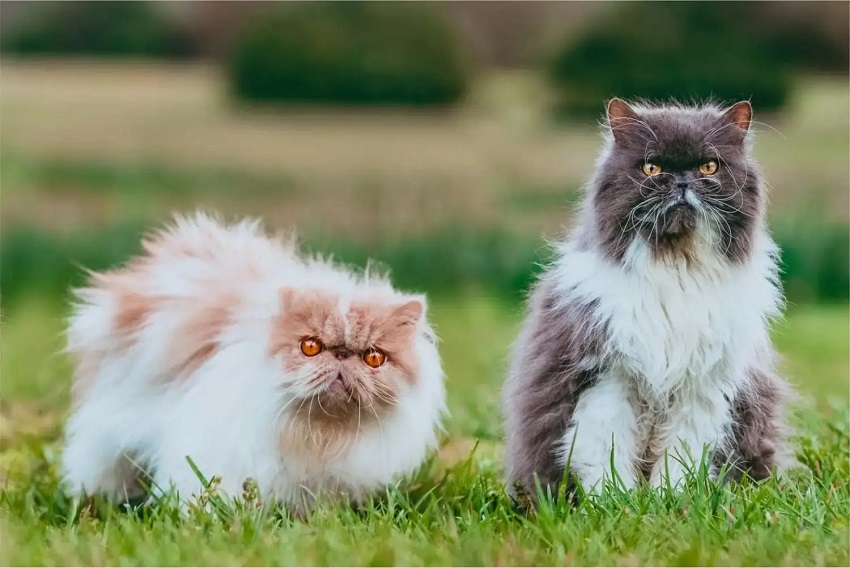
6. How to Care for and Train a Persian Cat
Mastering these tips for caring for and raising a Persian cat will be a great help to owners in their journey with this breed:
6.1. Grooming
A thick, long coat is the most prominent, yet most difficult, feature to care for on a Persian cat. To keep their coat soft and silky, you need to brush them daily with a special grooming comb to reduce shedding and prevent matting, especially in hard-to-reach areas like the belly and armpits.
Regular bathing is also very important to keep their fur soft and clean. When you bathe them, you must use a specialized pet shampoo to avoid irritating their sensitive skin. After bathing, you need to blow-dry their fur immediately to prevent them from catching a chill or developing skin conditions like fungal infections.
If their fur grows too long and interferes with their daily activities, regular trimming is necessary to keep them tidy and comfortable. In addition to their coat, cleaning their eyes, nose, and ears is also very important. You can use a soft cloth soaked in saline solution to wipe away dirt and grime from around their eyes, nose, and inside their ears.
6.2. Diet
The diet also needs to be carefully considered to ensure a Persian cat’s overall health. You need to provide them with protein and fat through meats, animal liver, fish, etc., to give them energy. If you don’t have much time to prepare food yourself, you can use pre-made food like pate and high-quality kibble that is suitable for your cat’s health, as advised by a veterinarian. However, you should avoid feeding your cat foods that are likely to cause allergies or are difficult to digest, such as milk, oily foods, or foods with a lot of spices.
Additionally, long-haired cats like Persians are very prone to hairballs due to their habit of licking themselves to self-groom. Therefore, you should supplement your cat’s diet with cat grass or a hairball-control gel to prevent this issue.
6.3. Training
Training also plays an important role in caring for a Persian cat. You can teach them to use the litter box by placing it in a quiet, safe, and easily accessible location. A feeding schedule also needs to be established by feeding your cat at the same time each day to ensure their digestive system works well. Furthermore, creating a comfortable living space with designated resting spots or toys will help your cat feel secure and quickly acclimate to your family.
7. Common Health Issues in Persian Cats
As a breed with a short head structure, Persian cats often suffer from health problems such as:
- Brachycephalic Airway Obstruction Syndrome (BAOS): This is a common condition in breeds with short noses and flat faces that causes an obstruction in the airway. This can lead to severe respiratory distress, especially when the cat overexerts itself or is in hot weather.
- Dermatitis and Skin Infections: Their unique head structure gives Persian cats a lot of loose skin around their face, leading to skin folds. These folds can easily collect dirt and grime, creating a perfect environment for bacteria and parasites to grow, which causes inflammation or skin irritation.
- Eye Problems: The structure of their short head causes a Persian cat’s eyes to protrude, making them prone to injury or inflammation from friction with the fur around their eyes or from dirt.
- Polycystic Kidney Disease (PKD): This is a common hereditary disease in Persian cats where cysts form in the kidneys and affect their function, which can lead to kidney failure if not detected and treated early.
To ensure your Persian cat’s overall health, owners need to be proactive with preventive care. Full and regular vaccinations are very important, as they not only prevent common infectious diseases in cats like rabies and panleukopenia but also boost their natural immunity, ensuring your cat stays healthy.
Additionally, you should take your cat to the vet for a health check-up at least 1-2 times a year to detect any underlying issues early and get appropriate care advice. A balanced diet is also essential; you must ensure your cat gets all the necessary vitamins and minerals to maintain good health and strengthen their immune system.
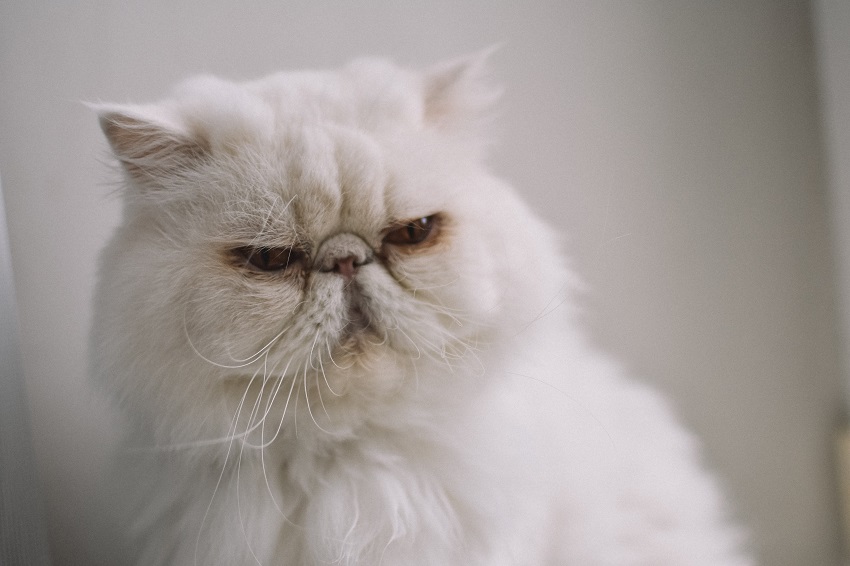
8. How Much Does a Persian Cat Cost?
The price of a Persian cat typically varies based on factors such as appearance, origin, coat color, age, and the breeder’s reputation. Here is a reference price list:
- Purebred Persian: starting from $350
- Persian Mix: starting from $150
- Imported Persian: starting from $5,000
9. FAQs
1. Frequently Asked Questions
- Are Persian cats hard to care for? Yes. Persian cats require daily brushing and often face respiratory and eye problems due to their unique facial structure.
- Can a Persian cat be left alone at night? Yes, but be cautious with kittens or cats with weak health.
- Should you give a Persian cat milk? No. Persian cats are often lactose intolerant, which can cause digestive issues.
2. Interesting Facts About Persian Cats
- Origin and Popularity: Persian cats originated in the region of Iran and captivated Europe starting in the 17th century, becoming a beloved breed for centuries.
- Color Diversity: Persian cats come in a rich variety of colors and patterns, from white and black to calico, creating a wide range of appearances.
- Famous in Pop Culture: Persian cats have often appeared in films and famous brands like James Bond, Austin Powers, and as the mascot for Fancy Feast. Many famous figures, such as Marilyn Monroe, have also owned Persian cats.
The Persian cat is one of the most popular and beloved breeds in the world thanks to its elegant appearance and calm, loyal personality. However, caring for a Persian requires meticulous attention, from daily brushing and face cleaning to a proper diet. If you have the time and patience, a Persian cat will be a wonderful companion, bringing joy and tranquility into your life.
References: https://en.wikipedia.org/wiki/Persian

